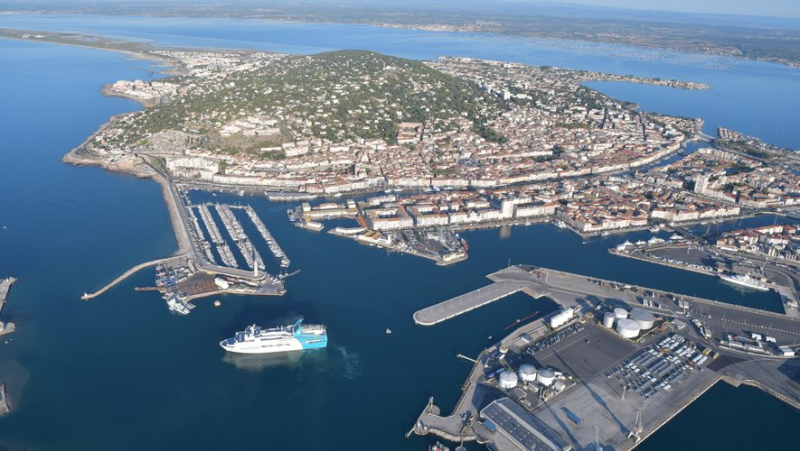Attractiveness, aging, unemployment, poverty: what are the good and bad figures from INSEE in Sète ?

Sète had 44,712 inhabitants in 2021, 40.2% of whom were over 60 years old. This is 1,092 more than in 2015. Midi Libre – EVA TISSOT
INSEE has just published a complete file on Sète, integrating the results of the 2021 census. It highlights both the real attractiveness of the city, the aging of its population and deep-rooted poverty.
A population on the rise despite everything…
In a department of Hérault pulled by the metropolitan area of Montpellier and in the national top 6 for population growth, Sète has never experienced a spectacular change in the number of its inhabitants. In almost 60 years, the increase has barely reached 10%.
Despite a very limited land footprint, the singular island has nevertheless been gaining inhabitants for 25 years. This is limited to 1,092 additional inhabitants between 2015 and 2021. But the increase is there. “The dynamic of +0.4% per year has been maintained since 2010, analyses Catherine Lavaud, head of the territory division of INSEE Occitanie. The demographic slowdown that we see in France is not the case in Sète. The drop in births is offset by a migratory surplus. The positive natural balance shows the attractiveness of the territory.” In 2021, the unique island recorded 2,000 new arrivals.
… but which is getting older and older
In Sète, the over-60s represent more than 40% of the population. This is much more than in France on January 1, 2021 (27%) and in Hérault (28.2%). The 60-74 age group alone represents 24.4% of the population. In 2010, those over 60 represented 33.6% of the population.
The trend has clearly become more pronounced in recent years. The proportion of over-65s has increased from 29% in 2015 to 33% in 2021."Aging is particularly marked in Sète, where the increase is twice as high as in the rest of Hérault. It is an attractive area for seniors, contributing to accentuating the phenomenon'', confirms Catherine Lavaud.
Scissor effect: Sète is also recording fewer births. The birth rate has been falling for 50 years, despite the baby boom of 2000: 14.1% from 1968 to 1976, 11.6% from 1999 and 2010, 9.9% from 2015 to 2021. A figure that is not, however, specific to the singular island.
A worrying poverty rate
Would poverty be less painful in the sun, as Aznavour sang ? On the singular island, the poverty rate reaches 25%, stable compared to 19.4% in Hérault and 15% in metropolitan France. This means that on average, one in four Sète residents has an income of less than €1,200 per month. Or that one in four couples (with two children) earns less than €2,550 per month.
The age groups most affected are 30-39 year olds and 40-49 year olds (more than 30%!). The least impacted are those over 60.
In the Île de Thau district, more than 60% of residents live below the poverty line.
surprisingly, the poverty rate is four times higher among tenants of their accommodation (nearly 40%) than among owners (10%).
Unemployment: improving but the rate remains high
François Commeinhes often congratulates himself on this. It's a reality: unemployment has fallen sharply between 2015 and 2021. Its rate for 15-64 year-olds fell from 23.1% to 19.1% in 2021.
Business creations have increased significantly since 2017, rising from less than 500 to nearly 700 in 2022, including 214 in trade and transport. “Sète is an economic hub that attracts workers from surrounding municipalities”, notes Catherine Lavaud.
However, the satisfaction is temper. “The number of jobs in the area is a major effect of the self-employed status”, points out INSEE. And then the rate itself remains much higher than the departmental average (15.3%) and especially the national average (10.1%) among 15-64 year-olds. Young people are the most affected.
Another particularity noted by INSEE: more Frontignan residents go to work in Sète (1,900) than in Montpellier (1,600). “Sète is a small tourist town but also an economic hub that attracts despite the social conditions”, explains Catherine Lavaud.
Transport, gender parity: some peculiarities
In the more secondary figures highlighted by INSEE, we can point out some other local peculiarities. Less than 10% of Sète residents use public transport to get to work (9.5%) while the national average is 15% and even 22% for city centres. Car use (61.3%) is just as widespread there as cycling remains confidential (3%).
The salary gaps remain marked between men and women (12%), especially among executives (nearly 22% compared to 16% in France) and those over 50 (nearly 20%).
I subscribe to read the rest



